GENALYTE Inc.
MERLIN
As the lead designer for the Merlin project at Genalyte, I was responsible for the end-to-end design and development of the Merlin Dashboard and Application. My role was comprehensive, covering everything from initial research to final implementation.
Goal #2
Merlin
A freestanding automated lab that runs a comprehensive set of tests on-site with Remote central lab oversight.
Merlin is Genalyte’s groundbreaking, fully automated testing solution designed to revolutionize the healthcare diagnostics landscape. Housed in a compact unit roughly the size of a standard refrigerator, Merlin serves as a self-contained, temperature-controlled lab that can be conveniently placed in various healthcare settings, including physicians’ offices, health systems, and retail clinics.
Goal
The primary goal of the Merlin Operator Dashboard is to provide a centralized, user-friendly interface for healthcare operators. The dashboard aims to streamline diagnostics by offering advanced error handling, real-time notifications, and various management functionalities.
Challenge
The main challenge lies in balancing speed with accuracy, especially given Merlin’s capability to deliver results in less than 30 minutes. The dashboard must also effectively handle various types of errors and provide quick mitigation steps to ensure the system is always ready for patient testing.
Approach
The approach involves a comprehensive, end-to-end design process, starting from in-depth research to understand operator needs and challenges. This is followed by iterative design, prototyping, and collaboration with the development team for implementation. The dashboard is then rigorously tested and validated to ensure it meets both user needs and system requirements.
My Role
-
End-to-End Design: Responsible for the complete design lifecycle of the Merlin Operator Dashboard, from initial research to final implementation.
-
User Research: Conducted in-depth studies to understand the unique challenges and requirements of healthcare operators using Merlin.
-
Prototyping: Created high-fidelity prototypes for the dashboard, focusing on advanced error handling and real-time notifications.
-
Collaboration with Dev Team: Worked closely with developers to translate design concepts into a functional dashboard.
-
Error Handling: Designed advanced error-handling features to quickly notify operators of issues and guide them through mitigation steps.
-
Testing & Validation: Led the testing phase to validate the dashboard’s functionalities, ensuring it met user needs and system requirements.
-
Iterative Improvements: Based on user feedback and testing, defined the next steps for iterative development and feature enhancements.
-
Scheduling & Management: Integrated various types of scheduling functionalities into the dashboard, including routine maintenance and repairs.
-
Patient Accessioning: Designed features for quick patient lookup, insurance verification, and test order confirmation.
-
Terminal Mode: Developed an advanced terminal mode for troubleshooting and handling complex tasks.
-
User Experience: Focused on creating an intuitive, user-friendly interface to enhance operator experience and efficiency.
Through these responsibilities, I aimed to ensure that the Merlin Operator Dashboard not only met but exceeded operational requirements and user expectations.
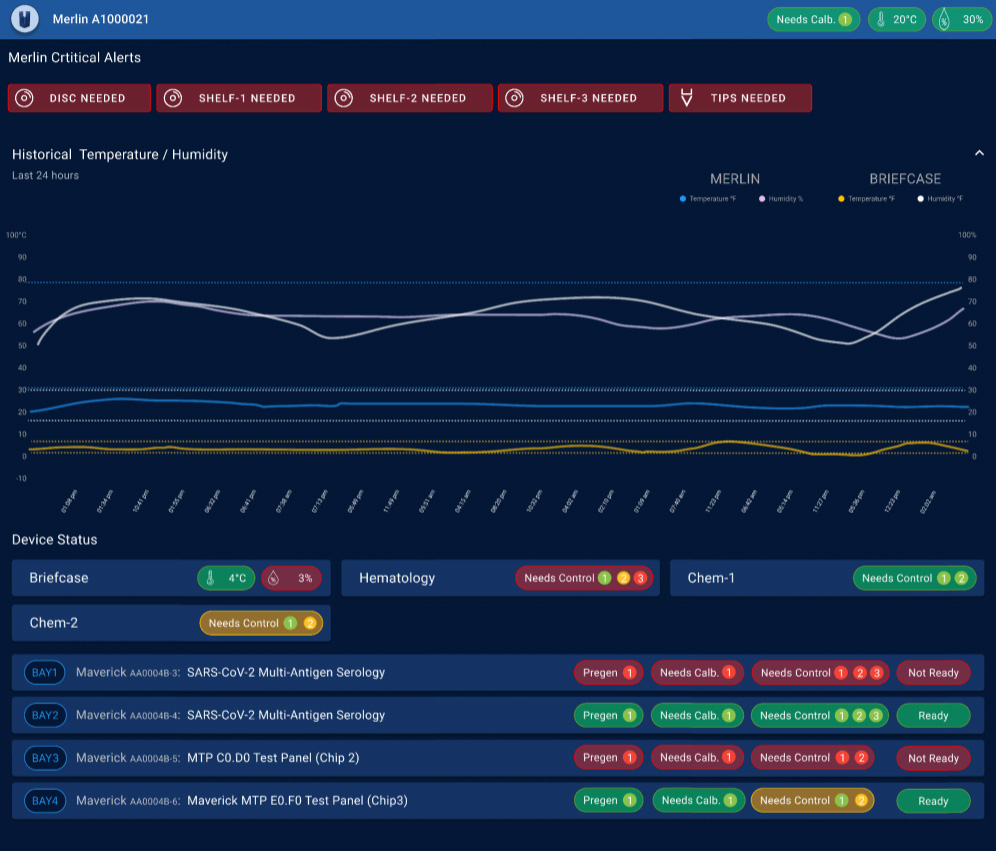
Achievements:
-
Successful Launch: Spearheaded the successful launch of the Merlin Operator Dashboard, receiving positive feedback from healthcare operators.
-
Error Mitigation: Designed and implemented advanced error-handling features that significantly reduced operator response time.
-
User-Centric Design: Achieved high user satisfaction scores through a focus on intuitive, user-friendly design elements.
-
Collaboration: Fostered a strong collaborative environment between the design and development teams, ensuring seamless implementation of design concepts.
-
Comprehensive Testing: Led rigorous testing phases that resulted in key optimizations, enhancing both functionality and user experience.
-
Iterative Development: Successfully incorporated user feedback into iterative design cycles, leading to continuous improvement of the dashboard.
-
Time-Efficiency: Met the challenge of delivering accurate test results within a 30-minute window through effective design solutions.
-
Compliance: Ensured that the dashboard met all healthcare compliance requirements, including FDA guidelines.
-
Feature Integration: Successfully integrated a wide range of scheduling and patient management features, making the dashboard a one-stop solution for operators.
-
Innovation: Introduced a terminal mode for advanced tasks and troubleshooting, setting a new standard in healthcare diagnostics.
-
Data-Driven Decisions: Utilized real-time analytics to make data-driven improvements to the dashboard, enhancing its overall performance.
-
Industry Recognition: Received accolades for the innovative approach to healthcare diagnostics, positioning Merlin as a game-changer in the industry.
Through these achievements, I contributed to establishing the Merlin Operator Dashboard as a benchmark for excellence in healthcare diagnostics.

The Approach:
-
In-Depth Research: Conducted comprehensive studies to understand the unique challenges and requirements of healthcare operators, laying the groundwork for design.
-
User-Centric Design: Prioritized user experience by creating intuitive interfaces and workflows, based on the insights gathered from research.
-
Prototyping: Developed high-fidelity prototypes to visualize and test the dashboard’s functionalities, ensuring alignment with user needs.
-
Collaboration: Established a collaborative framework with the development team to ensure seamless translation of design concepts into functional features.
-
Error Handling: Focused on designing advanced error-handling mechanisms to quickly notify operators and guide them through mitigation steps.
-
Iterative Development: Employed an agile approach, incorporating user feedback into iterative cycles for continuous improvement.
-
Testing & Validation: Conducted rigorous testing phases to validate the dashboard’s functionalities and user experience, leading to key optimizations.
-
Compliance Checks: Ensured all design elements were in line with healthcare regulations, including FDA guidelines, to avoid any compliance issues.
-
Feature Integration: Seamlessly integrated various functionalities like scheduling, patient management, and advanced troubleshooting into the dashboard.
-
Data-Driven Decisions: Utilized real-time analytics and key performance metrics to make informed design choices and improvements.
-
Stakeholder Engagement: Regularly updated stakeholders on project progress, aligning the design and development phases with business objectives.
By following this approach, I aimed to create a Merlin Operator Dashboard that was not only functional and user-friendly but also compliant and aligned with business goals.

Strategy:
Phase 1: Research & Planning
- Objective: Understand the unique challenges and requirements of healthcare operators.
- Activities: Conduct user interviews, surveys, and data analysis.
- Outcome: A comprehensive research report that informs the design strategy.
Phase 2: Prototyping & Initial Design
- Objective: Create a visual representation of the dashboard based on research findings.
- Activities: Develop wireframes, mockups, and high-fidelity prototypes.
- Outcome: A prototype that can be used for initial user testing and stakeholder presentations.
Phase 3: Development Collaboration
- Objective: Translate design concepts into a functional dashboard.
- Activities: Work closely with the development team, providing design assets and guidelines.
- Outcome: A functional dashboard ready for further testing and validation.
Phase 4: Testing & Validation
- Objective: Ensure the dashboard meets user needs and system requirements.
- Activities: Conduct usability tests, A/B tests, and compliance checks.
- Outcome: A validated dashboard with identified areas for improvement.
Phase 5: Iterative Improvements
- Objective: Continuously improve the dashboard based on user feedback and testing results.
- Activities: Implement design changes, re-test, and gather more user feedback.
- Outcome: An optimized dashboard that meets both user needs and business goals.
Phase 6: Final Implementation & Launch
- Objective: Roll out the fully developed and tested dashboard to healthcare operators.
- Activities: Finalize all design elements, conduct last-minute checks, and prepare for launch.
- Outcome: A successful launch with plans for ongoing maintenance and updates.
By strategically dividing the project into these phases, I aimed to ensure a structured, efficient, and effective approach to developing the Merlin Operator Dashboard.
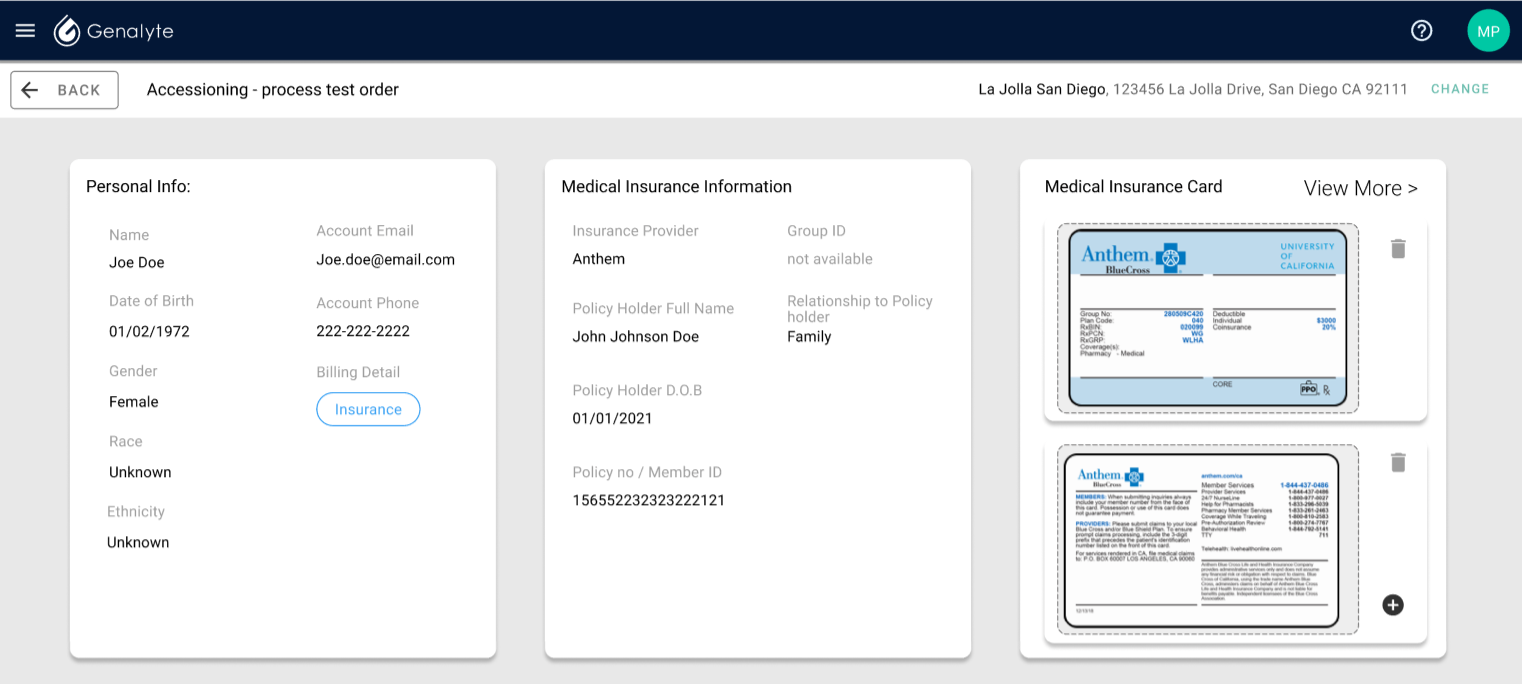
Key Metrics:
Device Errors:
-
Merlin Errors: Track any errors related to Merlin, such as “Disc needed,” “Shelf-1, 2, 3,” or “Tips needed.”
-
Briefcase Error: Monitor the status of the briefcase, identifying any errors that may occur.
-
Hematology Device: Monitor the control states like “pending,” “passed,” or “not yet started.”
-
Chemistry Device: Keep track of control states such as “ready” or “pending.”
Mavericks:
-
Maverick Bays: With two Mavericks, each having 4 bays, monitor which bay is running which test.
-
Control State of Pregen: Track whether Pregen needs calibration, needs control, or is in a ready state.
-
Bay Status: Monitor the ready state of the entire bay, identifying any issues that may arise.
Worklist KPIs:
-
Daily Load Immediately: Number of tests that need to be loaded immediately.
-
New Orders: Track the number of new test orders received.
-
Completed Orders: Monitor the number of orders that have been successfully completed.
Real-Time Notifications:
- Mitigation Steps: Provide easy-to-follow mitigation steps for any errors or issues, ensuring tight communication between the Merlin system and the operator.
By focusing on these key metrics, the Merlin Operator Dashboard aims to offer a comprehensive overview of system performance, user activity, and any issues that may arise, thereby ensuring efficient and effective operation.
Key Metrics for Informed Decisions:
-
Device Errors: Metrics related to Merlin and associated devices help in quick error identification and resolution.
-
Worklist KPIs: Metrics like ‘Daily Load Immediately,’ ‘New Orders,’ and ‘Completed Orders’ offer insights into operational efficiency.
-
Maverick Bays: Monitoring which bay is running which test and their control states provide a granular view of system performance.
-
Scheduling Metrics: Track the number of scheduled routine maintenance, repairs, and cleanups to assess the efficiency of schedule management.
Real-Time Analytics:
-
Instant Notifications: Real-time analytics enable instant notifications for any errors or required actions, ensuring immediate response.
-
Operational Insights: Real-time data provides insights into the system’s operational status, including scheduling and task management, helping in proactive decision-making.
ROI Measurement:
-
Efficiency Gains: Measuring the time saved by operators and the reduction in error rates helps in calculating the ROI of the dashboard.
-
User Satisfaction: Tracking user satisfaction scores can also be a key ROI metric, indicating the dashboard’s effectiveness in improving the user experience.
Merlin Operator Usability Test, Feedback, and Adaptation:
-
Usability Testing: Regular usability tests are conducted to assess the dashboard’s effectiveness and identify areas for improvement, including scheduling functionalities.
-
Feedback Loop: Operator feedback is continuously collected and analyzed to make data-driven adaptations to the dashboard, including schedule management features.
-
Iterative Adaptation: Based on usability test results and operator feedback, the dashboard undergoes iterative adaptations to enhance its functionality and user experience, including improvements in scheduling and task management.
By incorporating scheduling and schedule management into the data-driven decision-making process, the Merlin Operator Dashboard aims to offer a more comprehensive and efficient tool for healthcare diagnostics. This ensures that the system not only meets the immediate needs of operators but also adapts to long-term scheduling requirements.
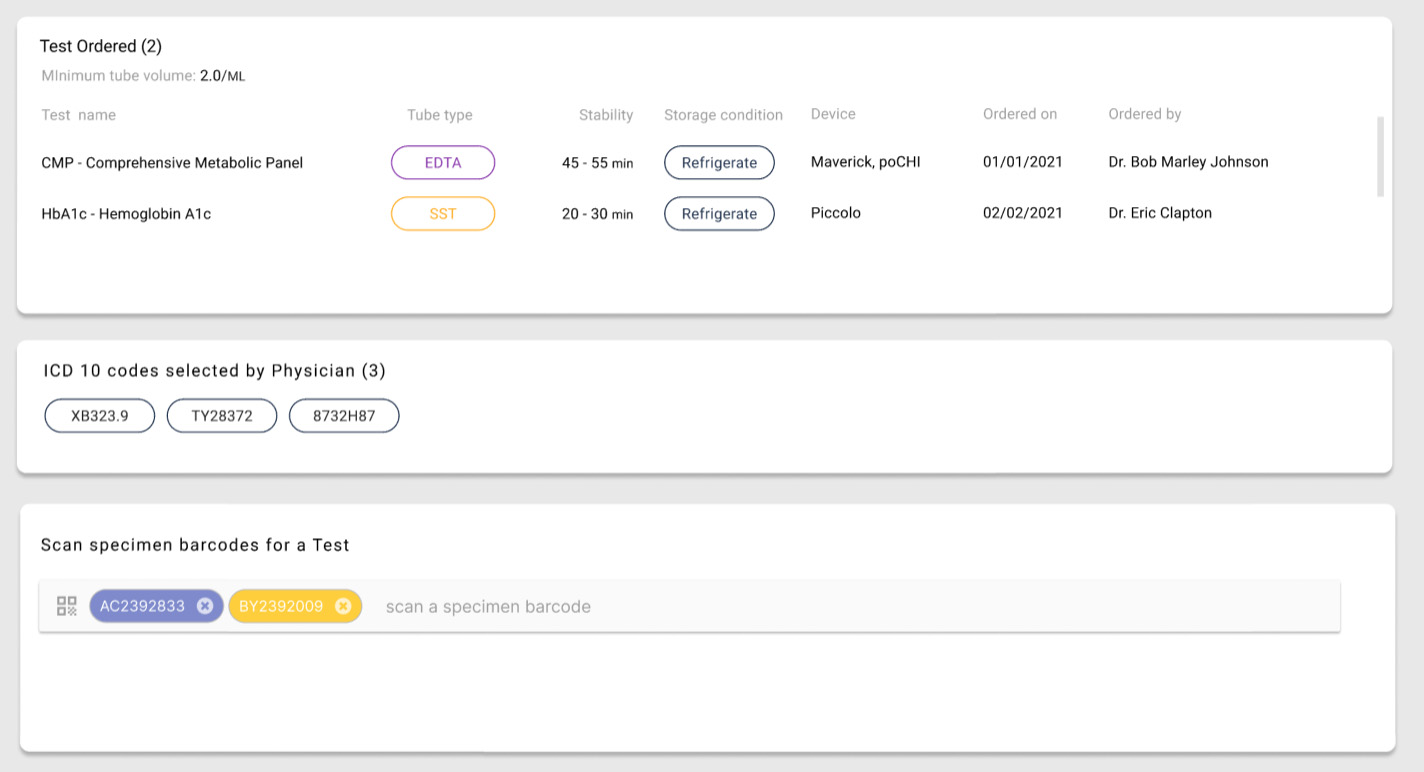
Key Learnings and Takeaways:
Time-Sensitive Operations:
- Learning: The 30-minute window for delivering accurate test results is a critical factor that adds complexity to the dashboard’s design and functionality.
- Takeaway: Future designs and updates must prioritize features and notifications that help operators adhere to this 30-minute window, ensuring timely and accurate results.
Importance of User-Centric Design:
- Learning: The user experience is paramount. A dashboard that isn’t intuitive can lead to errors and inefficiencies.
- Takeaway: Future iterations must continue to prioritize user-centric design, informed by real-time feedback and usability tests, especially under the 30-minute constraint.
Necessity of Real-Time Analytics:
- Learning: Real-time analytics are crucial for immediate error identification and mitigation, particularly within the 30-minute window.
- Takeaway: Continue to invest in real-time analytics and notifications to enhance operational efficiency and meet time-sensitive requirements.
Value of Iterative Development:
- Learning: The initial launch is just the beginning. Continuous improvement is key to long-term success.
- Takeaway: Adopt an agile approach, allowing for quick adaptations based on user feedback and changing needs, including the 30-minute window compliance.
Scheduling Challenges:
- Learning: Efficient schedule management is more complex than initially anticipated, requiring robust features to handle various tasks.
- Takeaway: Future updates should focus on enhancing scheduling functionalities, making it easier for operators to manage tasks within the 30-minute window.
Compliance and Regulations:
- Learning: Balancing user experience with compliance requirements, including the 30-minute window, is challenging but essential.
- Takeaway: Always keep abreast of healthcare regulations to ensure that the dashboard remains compliant without sacrificing user experience.
ROI Measurement:
- Learning: Quantifying the dashboard’s impact through ROI metrics provides valuable insights into its effectiveness.
- Takeaway: Continue to track key performance indicators that align with business goals to measure ROI accurately, including adherence to the 30-minute window.
Importance of Collaboration:
- Learning: Effective collaboration between design and development teams is crucial for the successful implementation of design concepts.
- Takeaway: Foster a collaborative environment to ensure seamless translation of design into functionality, especially when time-sensitive operations are involved.
By incorporating the critical 30-minute window into our learnings and takeaways, we aim to make the Merlin Operator Dashboard not only efficient and user-friendly but also compliant with time-sensitive healthcare requirements.
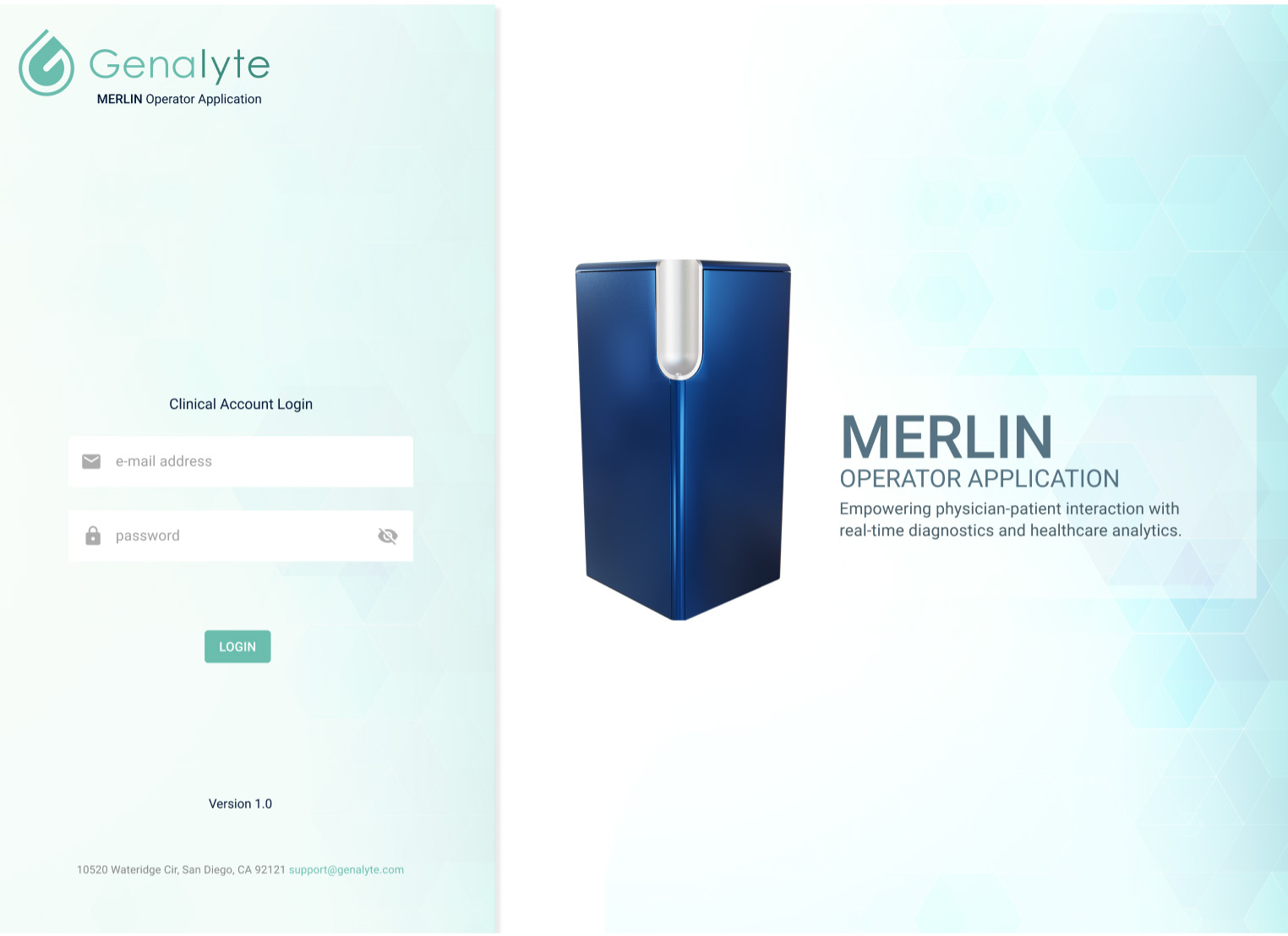
Optimization:
- Objective: To enhance the efficiency and effectiveness of the dashboard for better user experience and performance. Less Merlin downtime means more business.
- Strategy: Regular updates based on real-time analytics and user feedback to improve functionality and reduce errors.
Workflow:
- Objective: To streamline the operator’s tasks, especially within the critical 30-minute window for test results.
- Strategy: Implement intuitive UI/UX designs, real-time notifications, and automated task sequences to guide the operator through the workflow.
Resource Utilization:
- Objective: To maximize the use of available resources without compromising performance.
- Strategy: Dynamic resource allocation based on real-time needs and predictive analytics.
Compliance and Quality Assurance:
- Objective: To ensure that the dashboard meets all healthcare regulations and quality standards.
- Strategy: Regular audits, compliance checks, and quality assurance tests to maintain high standards.
Scalability:
- Objective: To ensure the dashboard can handle increased loads and functionalities as it grows.
- Strategy: Build on a modular architecture that allows for easy addition of new features and scaling.
Data-Driven Decision-Making:
- Objective: To make informed decisions based on real-time data and analytics.
- Strategy: Incorporate data analytics tools that provide actionable insights for continuous improvement.
Accessibility:
- Objective: To make the dashboard accessible to all users, including those with disabilities.
- Strategy: Follow accessibility guidelines and conduct accessibility tests to ensure universal design.
ROI Maximization:
- Objective: To maximize the return on investment by enhancing user satisfaction and operational efficiency.
- Strategy: Continuously monitor key performance indicators and make data-driven improvements.
Visibility:
- Objective: To keep all stakeholders informed about the dashboard’s performance and updates.
- Strategy: Regular reporting and transparent communication channels for all stakeholders.
Iterations:
- Objective: To continually improve the dashboard based on user feedback and performance metrics.
- Strategy: Adopt an agile approach for quick iterations and frequent updates based on real-time data and user feedback.
By focusing on these key aspects, the Merlin Operator Dashboard aims to be a comprehensive, efficient, and effective tool for healthcare diagnostics, continually adapting to meet user needs and business goals.
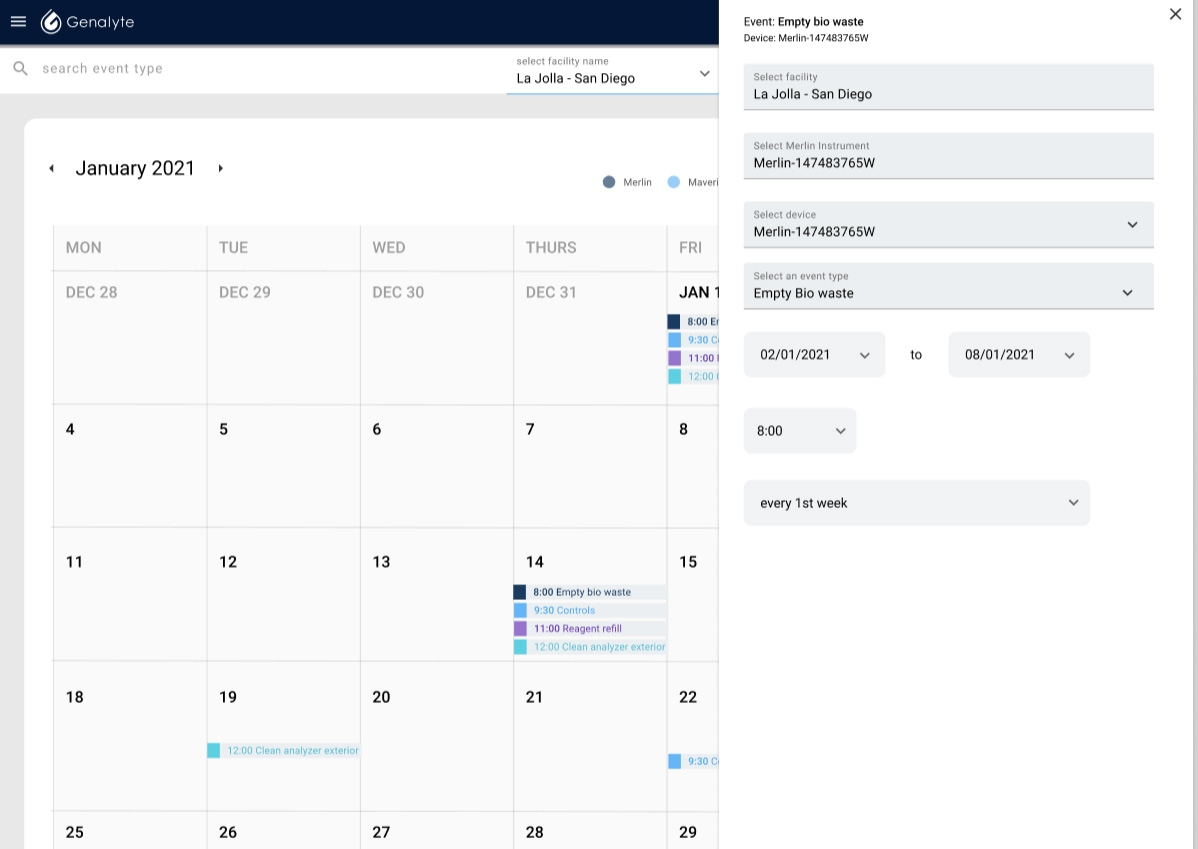
Next Steps:
User Feedback and Usability Testing:
- Objective: To gather more comprehensive user feedback for targeted improvements.
- Action: Conduct regular usability tests and surveys to identify areas for improvement.
Advanced Analytics Integration:
- Objective: To deepen the level of analytics for more nuanced insights.
- Action: Integrate advanced analytics tools that can provide more detailed data on user behavior and system performance.
Compliance Updates:
- Objective: To stay ahead of any changes in healthcare regulations.
- Action: Regularly review and update the dashboard to ensure it remains compliant with the latest healthcare regulations.
Enhanced Accessibility Features:
- Objective: To make the dashboard more accessible to a broader range of users.
- Action: Implement additional accessibility features based on universal design principles.
Resource Optimization:
- Objective: To further optimize resource utilization for better performance.
- Action: Use machine learning algorithms to predict resource needs and allocate them dynamically.
Scalability Planning:
- Objective: To prepare the dashboard for future growth.
- Action: Conduct scalability tests and prepare the architecture for potential high-load scenarios.
Real-Time Notification Enhancements:
- Objective: To improve the real-time notification system for quicker error resolution.
- Action: Develop a more intuitive notification system with actionable insights for immediate error mitigation.
ROI Analysis:
- Objective: To measure the effectiveness of recent changes.
- Action: Conduct a comprehensive ROI analysis to evaluate the impact of recent updates and plan future investments accordingly.
Visibility and Reporting:
- Objective: To improve stakeholder communication.
- Action: Develop a dashboard for stakeholders to track key performance indicators in real-time.
Iterative Development:
- Objective: To continue the cycle of improvement.
- Action: Based on all the data collected and lessons learned, plan the next series of iterative updates for the dashboard.
By focusing on these next steps, the Merlin Operator Dashboard aims to continually evolve, offering enhanced functionalities and efficiencies that meet both current and future needs.
